Did the head gasket on your dirt bike just fail? Not sure what a blown head gasket means? This article will cover what a blown head gasket is, the most common signs of one, and how to fix it.
Fixing a head gasket isn't that difficult on most bikes. Figuring out why the gasket failed may be the bigger issue, however…
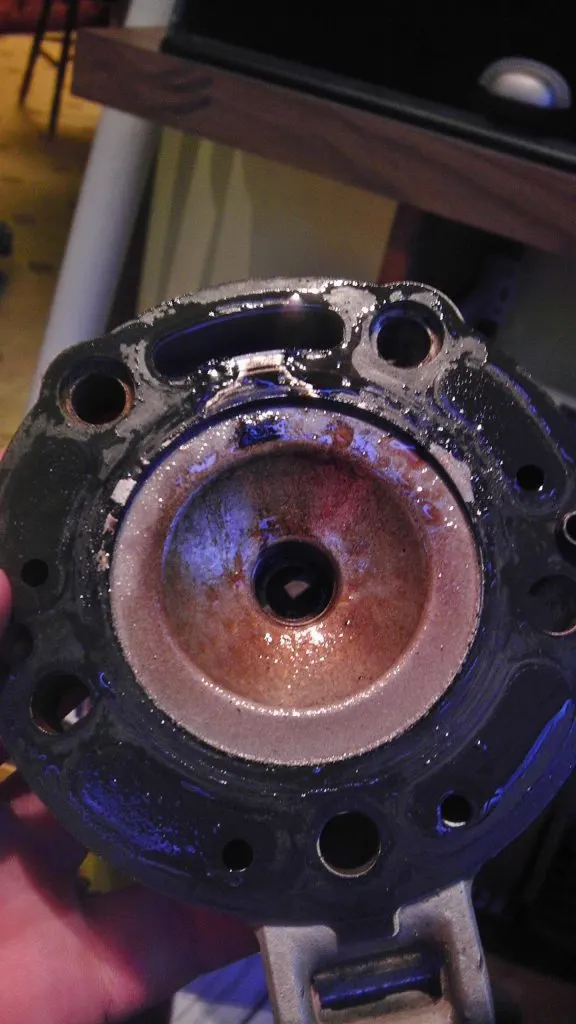
What Is A Blown Head Gasket?
A blown head gasket is when the gasket that seals the cylinder and cylinder head fails. The gasket is either metal or a rubber o-ring. Metal gaskets have a tendency to fail more often than a rubber o-ring.
What Happens If I Keep Riding With A Blown Head Gasket?
Depending on how bad the gasket is, the result can go from not very good to very bad. The first sign will probably be a loss of coolant. This will either be from it coming out the overflow, or leaking into the cylinder.
Coolant leaking into the cylinder will burn out the exhaust and have a "sweet" smell to it.
Continuing to ride with a blown head gasket can and will eventually lead to overheating and seizing the engine if it gets too hot.
Deadly signs of a blown head gasket on a dirt bike
Whether you have a dirt bike, motorcycle, or car, the symptoms of a blown head gasket are generally the same.
A common mistake is seeing or feeling these symptoms, but not doing anything about them until it's too late - that's when you have an engine failure and jump on your phone to complain to the world about your dirt bike problem... (sarcasm intended, but it's also true in some cases).
These are the most common 2 stroke & 4 stroke dirt bike blown head gasket symptoms:
Overheating
Whether you have a 2 stroke, 4 stroke, liquid-cooled or air-cooled dirt bike, they can all overheat. An air-cooled engine will give off noticeably more heat, and if you check the temperature with a CHT sensor (Amazon) at the spark plug washer, it should be near 350F degrees and below 425F.
A liquid-cooled engine temperature can be measured with a coolant temp sensor (Amazon) and should be in the 180-220F degree range. If it's over 240F degrees, it's overheating and will start doing damage.
Overheating will eventually cause the head gasket to fail due to extreme temps or the cylinder head may warp and fail.
Coolant coming out of the overflow tube
When you see coolant leaking out of the overflow hose from the radiator on your liquid-cooled dirt bike, this is one sign that your head gasket might be blown. How do you tell if that's the case, though?
If you're idling or riding slow for more than a few minutes, coolant spewing out the overflow is fairly common. If it happens just once, then the head gasket is probably fine.
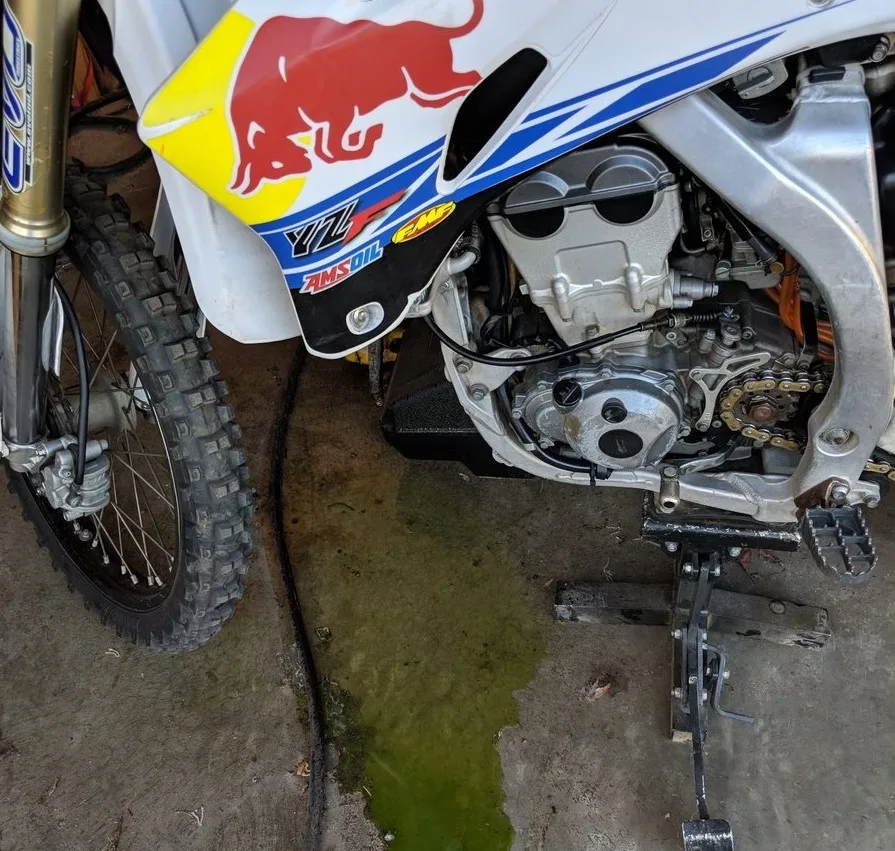
However, if coolant leaks out the overflow virtually every time you ride and after the same amount of time - that's a sure sign that you have a blown head gasket.
How do I know? Because it has happened to me before and is very frustrating to figure out and then realize that you have to fix it before it gets worse.
Coolant level lower after riding
Another common symptom of a dirt bike blown head gasket is having a low coolant level after your ride. Just like coolant leaking out the overflow, if this happens just once, then it may not be a real issue.
But if you check your coolant every or before every ride (which you SHOULD be doing to prevent problems) and the coolant is below the fins every time, you might have a blown head gasket.
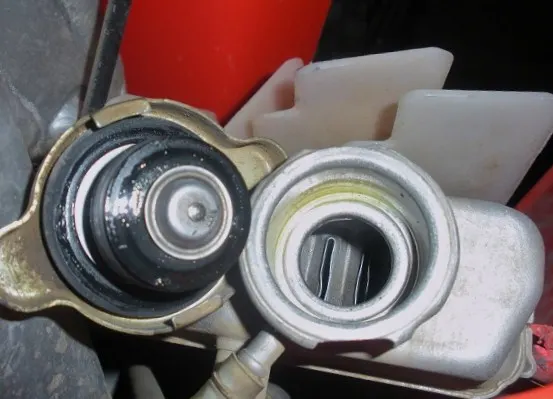
It could be a bad water pump seal, but if there's no water/coolant in the oil (milky oil), then it's most likely a blown head gasket.
Running Low On Compression?
The head gasket keeps the cylinder sealed to hold the compression. Compression is when the piston comes up in the cylinder and "squeezes" the air and fuel mixtures. A leaking gasket will not be able to contain all of that compression.
A compression test will show this, and your dirt bike will be down a little bit on power. Most 2 strokes are in the 130-150 PSI range when compression testing. If they're below 110, then it's probably time for a top end rebuild.
Less power
Dirt bike engines need to be hot enough to efficiently burn the fuel mixture and make the most power, but once they get too hot, they start to lose power.
For example, if you're out riding all day on the track or trails and you notice it starting to lose power, you should stop and shut off the engine ASAP because it may be overheating and the head gasket may have failed.
The longer you ride on an overheated engine, the more damage you will do, which will result in a bigger cost when rebuilding the engine due to more parts needing to be replaced.
Spark plug fouling
When the head gasket is blow, coolant can leak into the combustion chamber. This coolant can easily cause the spark plug to wet foul.
How do you know it's wet-fouled? Your dirt bike stops running and won't start and the spark plug tip is wet.
Hesitation/poor throttle response
If coolant is getting into the combustion chamber, this greatly affects the air-fuel ratio. If you feel your bike hesitating or sputtering with poor throttle response while trying to accelerate, there's a chance the head gasket has failed and coolant is leaking into the cylinder.
The most common signs of a blown head gasket on a dirt bike are:
- Overheating
- Coolant coming out the overflow tube
- Coolant level lower after riding
- Low compression
- Less power
- Plug fouling
- Poor throttle response
What Causes A Blown Head Gasket?
The most common causes of a blown head gasket on a dirt bike are overheating, a poorly installed gasket, a cracked head, or a gasket failure.
Overheating too many times
Keeping your dirt bike at the proper temperature is very important. The more times you boil it over and have coolant spewing out the overflow, the more likely it is to cause bigger problems.
Bad gasket installation
The head gasket is made to seal out the mating surfaces of the cylinder and cylinder head. If you don't properly install the new gasket, leave some of the old gasket material on a mating surface, or reuse an old head gasket, the high pressure of the engine will likely blow the gasket.
Cracked head
A cracked cylinder or cylinder head can cause lots of problems, including overheating, coolant leaking, or oil leaking. These can lead to a blown head gasket, but in any case, a cracked head is a rare but major problem on a dirt bike.
If the crack is on the exterior of the cylinder head or cylinder, you will see a hairline rack with a careful visual inspection. However, an internal crack will only be seen if you remove the top end.
Gasket failure
A head gasket can just fail all by itself. Even if you properly installed it, high hours or low-quality material can fail over time. You won't know for sure until you take the cylinder head off, unfortunately.
How To Fix A Blown Head Gasket
A simple replacement of the head gasket can sometimes fix the problem. However, you must get to the root of the problem if something else caused the gasket to blow.
What exactly caused the head gasket to fail?
Did you simply install it incorrectly, reuse an old gasket, or not properly clean the gasket mating surfaces? If so, then there's a fair chance that just replacing the gasket and cleaning the cylinder and head gasket surfaces will fix your problem.
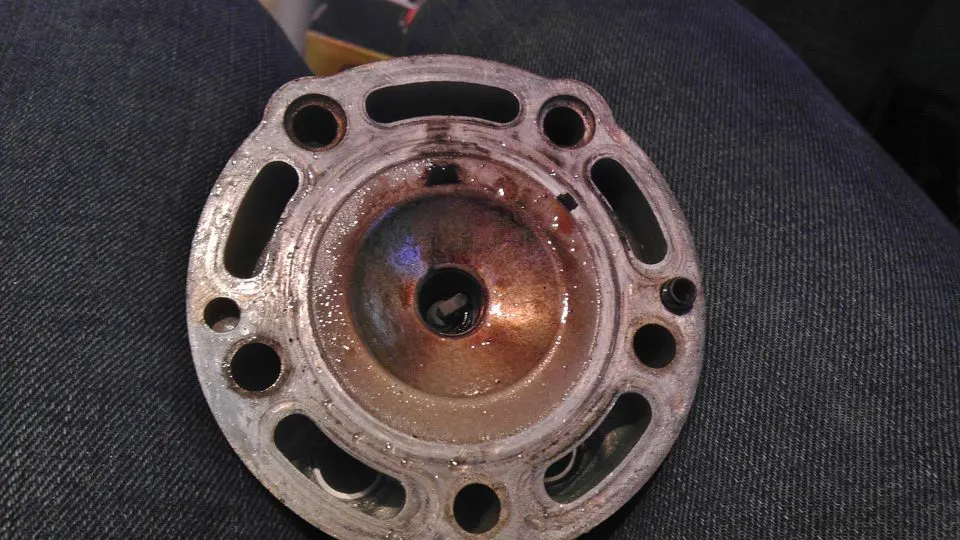
Why Did It Overheat?
Did your bike overheat because the gasket blew? Or did the gasket blow because your bike overheated? There's a difference between the two.
Paying close attention to your bike can help you understand foreseeable problems.
What do I mean by this?
Something as simple as checking the radiator coolant level before each ride will let you know if your bike has any ongoing symptoms, or if an issue happened during your last ride.
A low coolant level every time you ride either means you get it too hot and it blows coolant out on your rides, or the head gasket has already failed and it's burning it up as you ride.
Overheating Leads To Other Problems
Even well-manufactured metals can degrade with too much heat. An overheated engine can cause the cylinder head to warp.
It won't be a visual difference, but if you check it with a proper indicator setup, it only takes about a .001 variance to cause issues. A Head that is warped won't be able to properly seal the combustion of the engine.
There is now a small gap where the head gasket is, and that is why it fails. It burns enough of the material away and loses its seal.
How To Fix A Warped Cylinder Head
This happened on my 2001 Honda CR125 cylinder head. I took the head off and was planning on milling off material to get it completely flat again. However, I was able to use a flat ground piece of steel and put some 320 grit sandpaper on it. I sprayed some oil on the paper to keep it from loading up.
I then rubbed the cylinder head on the flat sandpaper. It didn't take long. I could see where the low spot was after just a few seconds of sanding. I only went until the entire gasket surface was fully cleaned up. I'd say it took 1 minute or less for a complete cleanup.
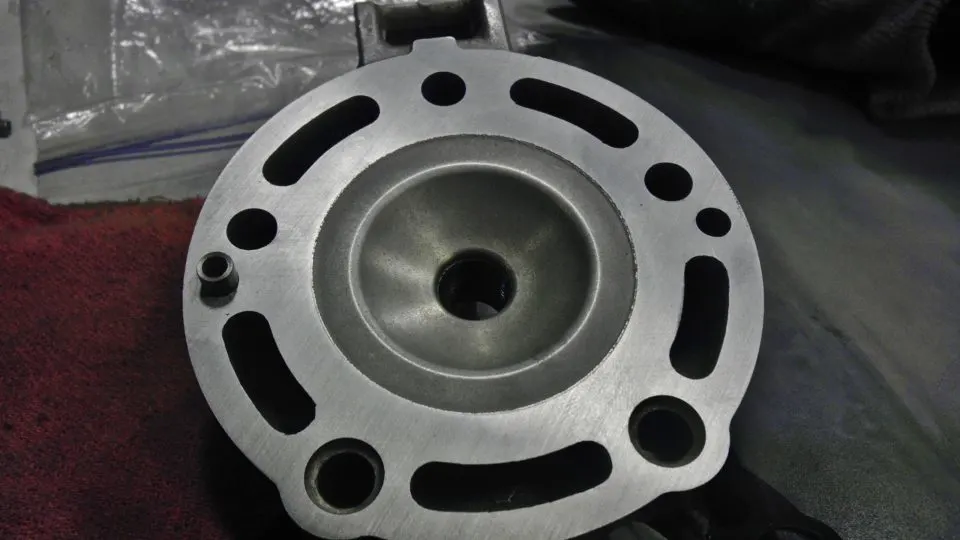
Wash the cylinder head off with warm water and soap to prevent any of that grit from getting into and damaging the engine when you put it back together.
For tips and step-by-step instructions on rebuilding a 2 stroke top-end click here.

